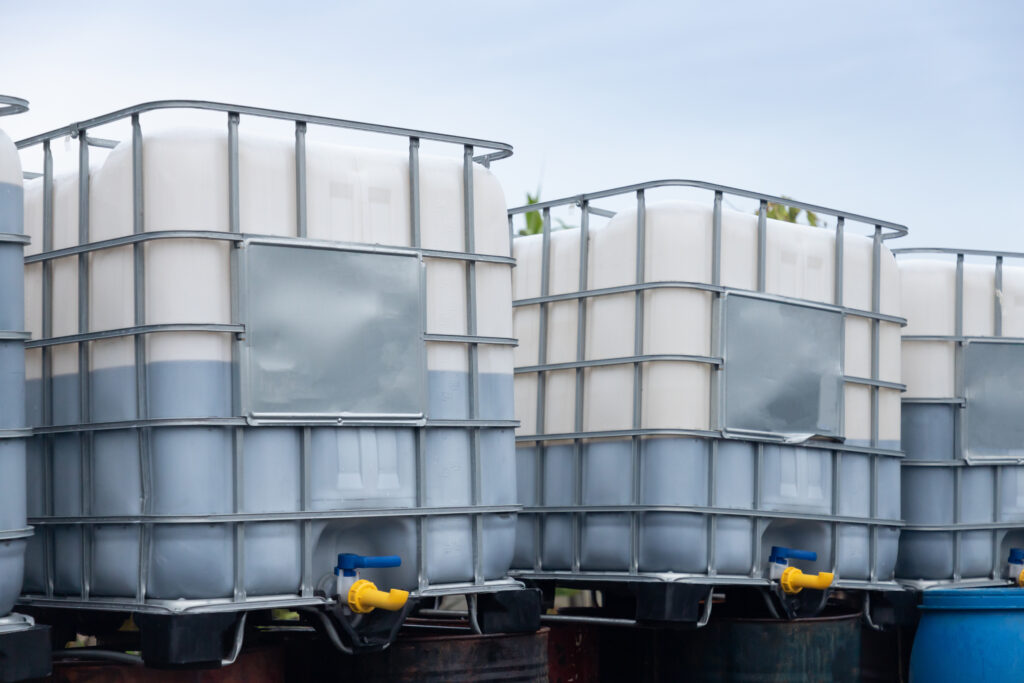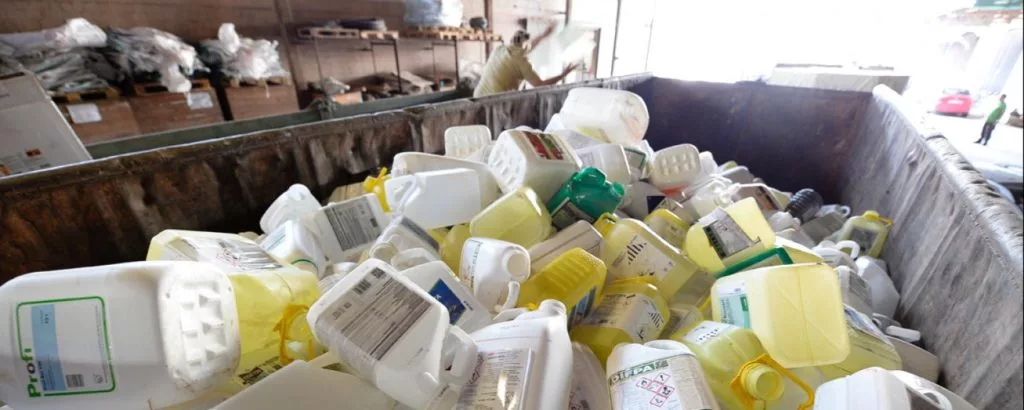What are Intermediate Bulk Containers (IBCs)?
Intermediate Bulk Containers, often referred to as IBCs, are designed to store or transport liquids, solids or pastes. They are often pallet mounted, industrial grade and reusable. They tend to come in two main categories:
- Flexible IBCs: These are made from flexible fabric, often thick woven strands of polypropylene, and usually have a capacity of a metric ton. They are sometimes referred to as bulk bag, big bag, super sack, tonne bag or jumbo. Most commonly, they are used to store sand, fertilizer or granules of plastic.
- Rigid IBCs: These are probably what you think of when you imagine an IBC. They have an integrated pallet mount, which makes them easy to move, plus they are stackable, which makes them perfect for storing large quantities in one place. Their versatility means that they can be reused time and time again for all kinds of different materials. Usually, they are made from steel, plastic or a composite of both.

What are the advantages of using IBCs?
The main advantage of using IBCs is how they make the most of the space you have to play with. Not only can they store a lot in their own right, but the ability to stack them means that you create so much storage space in a relatively small footprint. As a rough guide, you can get 1000 litres stored in an IBC which takes up a smaller area than a barrel drum that can only store 205 litres.
They are also much easier to move all you need is a forklift. When you compare that to attempting to strap a collection of drums to a pallet securely, the IBCs are so quick and easy.
If you have a group of IBCs stacked together, they can be bunded easily as well. This adds to your level of security, and dramatically reduces your costs in the process. Instead of having to bund a large area, you only need to get enough bunds for the space on the ground.
Finally, another huge benefit is how it is much easier to decant from an IBC. The large screw caps on the top make it easy to fill initially, and the valve on the side, at a low level, means that you don’t need to engage in tricky tipping manoeuvres that are required when using a drum.
What can I store in an IBC?
IBCs are well known for their versatility, and they can safely be used to store sand, food, grains, liquid, solvents and a whole host of chemicals.
It is the ability to store chemicals that make it so appealing to many. They are approved by the UN for transporting a broad range of chemicals, as long as a series of risk assessments have taken place to establish any potential hazards.
What risk assessment do you need to do when using IBCs?
- Know what you’re dealing with – label your IBCs with what is stored in them and any potential hazards
- Are they located in a safe place? Is the bund positioned correctly? Are there any fire hazards nearby? Isolate them from groundwater areas.
- Are they inspected regularly? Ensure that they are checked often and appropriate repairs are carried out.
- Have a plan for spillages – assess the risk and construct a plan. Have a spill kit ready.
- Waste management – take steps to reduce the amount of waste that is produced, and have a plan to handle it responsibly
What should I do if I have a chemical spill?
If you experience a chemical spill, you should immediately start putting your spillage plan into action. This will ensure that the risk to the people and environment in the area is reduced and that the spill is contained as best as possible. The priority should always be to ensure everybody is safe.
In order to clean up a spill, you will need the help of professionals. At Ideal Response, we can be with you within 2 hours of your call. We will use our state of the art technology, coupled with our highly trained staff, to contain, neutralise and decontaminate the affected area.
Get in touch with us today for a free quote.



